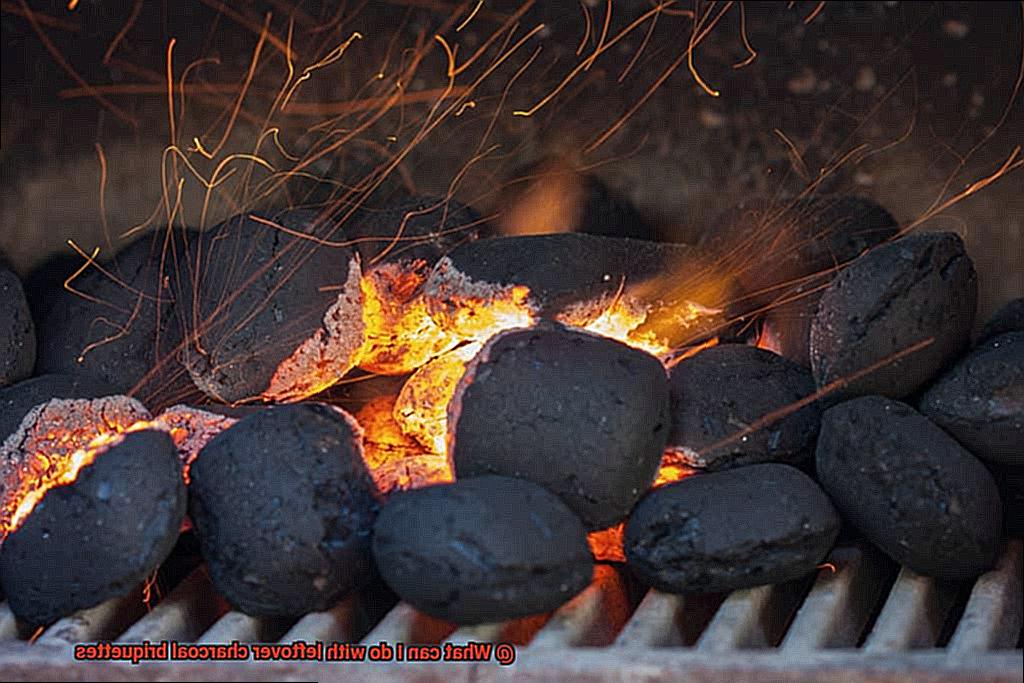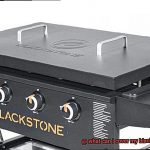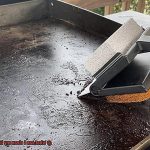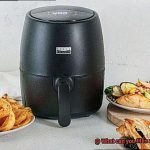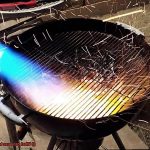Hey there, grill masters, backyard chefs, and BBQ enthusiasts. Are you staring at the remnants of last night’s cookout on your grill? Or do you have a bag full of unused charcoal briquettes sitting in your garage? Don’t let them go to waste. Today we’re here to answer the age-old question: “What can I do with leftover charcoal briquettes?”
Charcoal briquettes are an essential component in the art of grilling, but what about their shelf life? It’s time to put those remaining briquettes to good use. And fear not – we’ve got some creative suggestions for you.
First up: fire starters. Did you know that leftover charcoal briquettes make exceptional fire starters? Skip the store-bought versions and make your own by wrapping a few briquettes in paper or placing them in a metal can. Your next fire will thank you.
But wait, there’s more. Charcoal briquettes have practical uses beyond grilling. They can be mixed with soil to enhance water retention, used to dehumidify closets, and even added to homemade air fresheners.
With so many possibilities, it’s time to get creative and put those leftover charcoal briquettes to good use. So don’t toss them out just yet – let’s dive into some fun ideas together.
Contents
Reusing Charcoal Briquettes for Grilling
Experienced grillers know that reusing charcoal is not only cost-effective but also environmentally friendly. With a bit of care, you can give your old briquettes a new lease on life.
Before reusing the charcoal briquettes, you must clean them properly. Remove any ash or debris from the previous grilling session using a grill brush or vacuum cleaner. Once cleaned, you can rearrange them in the grill to create a new bed of coals.
However, be aware that reusing charcoal briquettes may affect the flavor of your food. The older the briquettes, the less heat they produce, which may result in longer cooking times. Old briquettes may also contain impurities that can affect the taste of your food.
To avoid these issues, consider mixing fresh and old briquettes together to create an even burn. Alternatively, use older briquettes for low-heat cooking such as smoking or slow-roasting, where longer cooking times are required.
But don’t limit yourself to just grilling. You can use reused charcoal briquettes for other purposes as well, such as smoking meats or vegetables, starting campfires or bonfires, acting as natural deodorizers, and even as a soil amendment for plants. By repurposing them instead of throwing them away, you’re doing your part to reduce waste.
Smoking Meats and Vegetables with Leftover Charcoal Briquettes
Don’t toss them just yet. Instead, use them to smoke meats and vegetables for a mouth-watering flavor that will have your taste buds dancing in delight. Smoking involves cooking food over low heat and smoke for an extended period of time, resulting in tender and flavorful dishes that are sure to impress your guests.
To smoke with leftover charcoal briquettes, you’ll need to set up your grill for indirect heat. Arrange your briquettes on one side of the grill and place a drip pan on the other side. Preheat your grill to around 225-250 degrees Fahrenheit, then add some wood chips or chunks to the hot coals to create smoke. The type of wood you use will depend on your personal preference – popular options include hickory, applewood, and mesquite.
Once the smoke has started billowing from the grill, it’s time to add your meat or vegetables. Place them on the side with the drip pan and close the lid. Let them cook slowly for several hours, adding more wood chips or chunks as needed to maintain a steady smoke. Check your food regularly and use a meat thermometer to ensure it reaches a safe internal temperature before serving.
What types of food can you smoke with leftover charcoal briquettes? The options are endless. Here are a few ideas:
- Pork shoulder
- Brisket
- Chicken wings
- Salmon
- Vegetables like eggplant and portobello mushrooms
Starting Campfires and Bonfires with Leftover Charcoal Briquettes
Not only will it save you money, but it’s also an eco-friendly option that extends the life of your charcoal. Here are some steps to safely and effectively start a fire with leftover charcoal briquettes:
- Gather Kindling and Dry Wood: Before lighting up the charcoal briquettes, gather some kindling and dry wood. This will help the fire catch on and spread evenly. Use small twigs, dry leaves, or newspaper to create a base for the fire.
- Clear The Area: Make sure the area is clear of any flammable objects such as dry grass, bushes, or leaves. Keep a safe distance from buildings or other structures that could catch fire. Don’t forget to clear the space above the fire as well.
- Create A Teepee Shape: Place the kindling in a teepee shape over the briquettes. This will allow air to circulate and help the fire spread. You can also use a log cabin or lean-to structure for your kindling.
- Light The Kindling: Light the kindling using a match or lighter. As it catches fire, the charcoal briquettes will slowly start to ignite and heat up. Be patient and don’t rush the process by adding more fuel before the fire has properly started.
- Keep Water Nearby: Always have water or sand nearby in case of an emergency. It’s better to be safe than sorry. A bucket of water or a fire extinguisher is ideal.
- Use New Charcoal For Cooking: If you plan on using leftover charcoal briquettes for cooking, make sure to use new charcoal for starting the fire. This will ensure that there are no harmful chemicals or residue left on the briquettes from previous cooking sessions.
Utilizing Leftover Charcoal Briquettes as a Natural Deodorizer
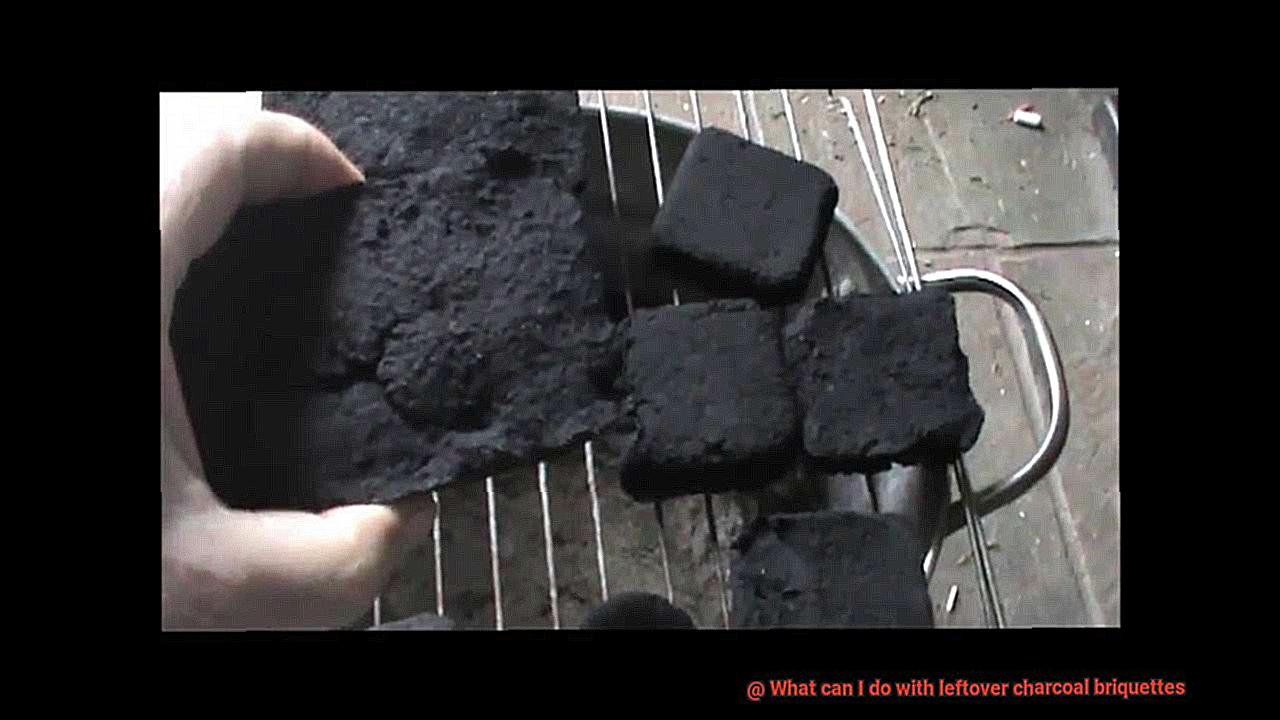
Yes, that’s right – charcoal can actually be used as a natural deodorizer.
Charcoal has the ability to absorb odors, making it a great option for eliminating unwanted smells around the house. To use charcoal briquettes as a deodorizer, simply place them in a container or pouch and leave them in areas where odors are present. This could be your refrigerator, closet, or even your car. The charcoal will absorb the odors, leaving the space smelling fresh and clean.
But before you start tossing any old charcoal around your house, it’s important to note that you should only use natural, untreated charcoal for this purpose. Avoid using charcoal that has been soaked in lighter fluid or other chemicals, as this can release harmful fumes into the air.
Using charcoal as a deodorizer is not only effective but also eco-friendly. Instead of relying on synthetic fragrances or harsh chemicals to mask odors, you can use a sustainable solution that won’t harm the environment. Plus, it’s an affordable alternative to expensive air fresheners and odor eliminators.
Using Leftover Charcoal Briquettes as a Soil Amendment for Plants
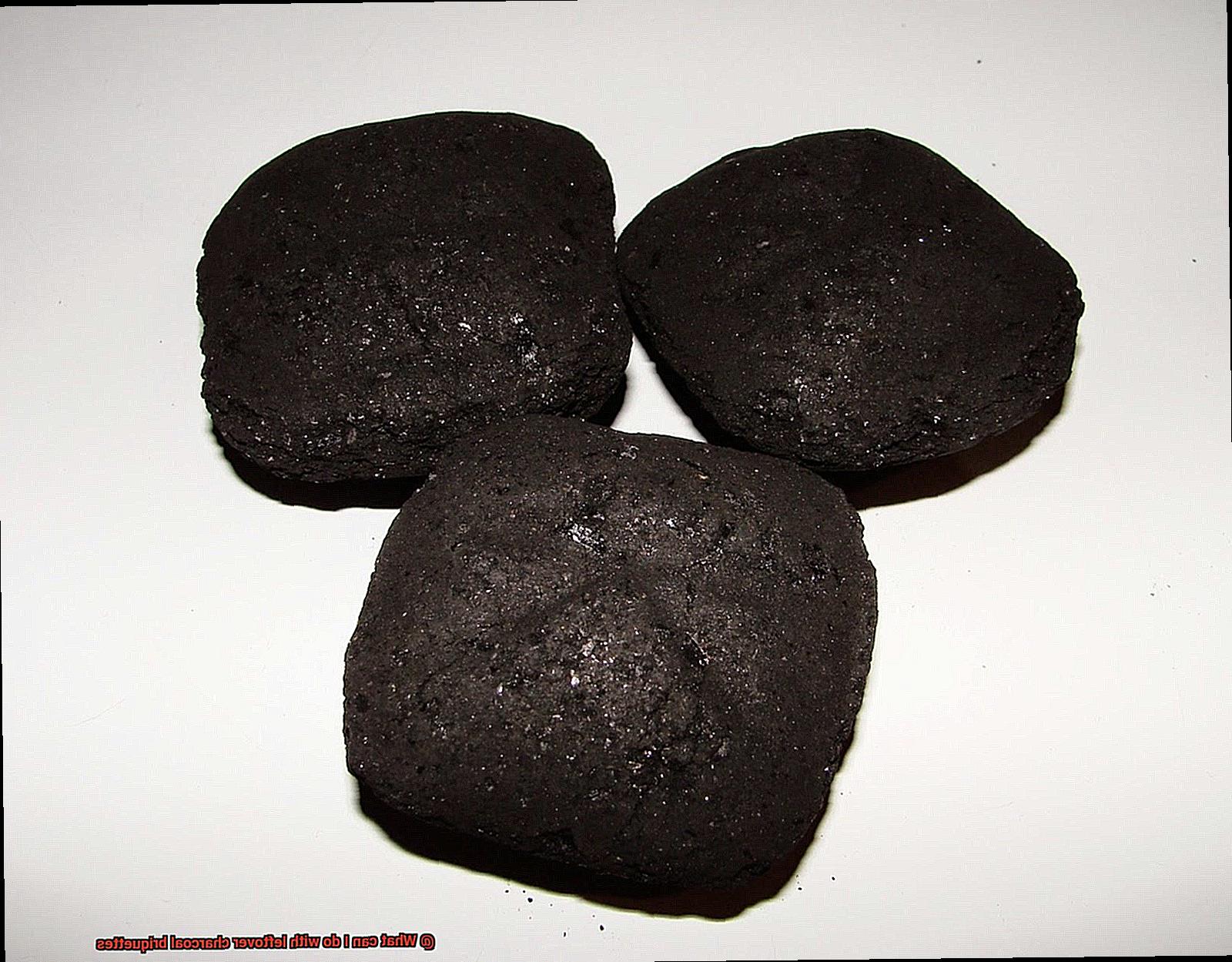
Not only is it an eco-friendly solution, but using charcoal in your garden has numerous benefits.
First and foremost, make sure to use natural, untreated charcoal to avoid any harmful chemicals or additives. Then, break up the briquettes into small pieces and mix them evenly into your soil. The porous nature of charcoal helps improve soil drainage and moisture retention, which is vital for healthy plant growth.
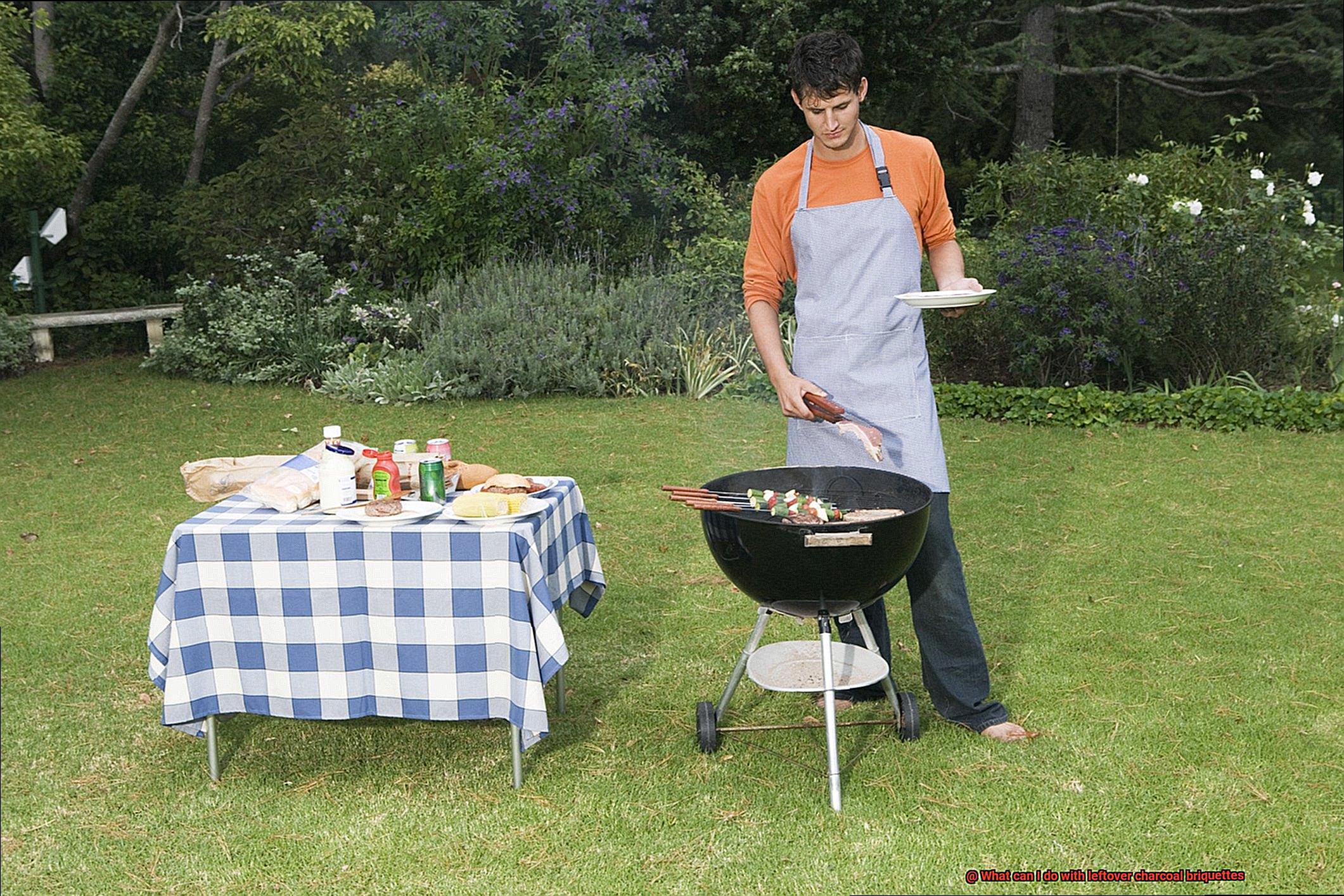
But that’s not all – charcoal can also be used in composting. Adding a layer of charcoal on top of your compost pile not only helps absorb excess moisture but also prevents unpleasant odors from developing. Additionally, the neutral pH of charcoal makes it an excellent choice for balancing out soil acidity levels. This makes it an ideal amendment for plants that prefer a more alkaline environment.
Benefits of Reusing Charcoal Briquettes
Not only does this practice save you money, but it is also environmentally friendly and can enhance the quality and flavor of your cooking. As an expert on the benefits of reusing charcoal briquettes, let me dive deeper into why this is a smart choice.
Cost-saving is one of the most significant benefits of reusing charcoal briquettes. Charcoal can get expensive, particularly if you grill or smoke frequently. By reusing your briquettes, you extend their lifespan and get more out of your investment. Plus, you’ll be reducing the amount of waste you generate, which is always a good thing.
However, reusing charcoal briquettes isn’t just about saving money – it’s also environmentally friendly. Charcoal briquettes are made from natural resources like sawdust, wood chips, and other organic materials. By reusing them, you reduce the demand for new charcoal production, which helps to preserve natural resources and reduce the carbon footprint associated with transportation and production.
In addition to being cost-effective and eco-friendly, reusing charcoal briquettes can improve the quality of your cooking. Over time, briquettes break down and lose some of their capacity to burn hot and evenly. By reusing them, you allow them to burn more consistently, which can help you achieve better results when grilling or smoking food.
But perhaps one of the most exciting benefits of reusing charcoal briquettes is that it allows you to experiment with different flavors. When you reuse your charcoal briquettes, they absorb some of the flavors from previous meals. This can add depth and complexity to your cooking and make each dish unique. It’s like having a secret ingredient that no one else knows about.
In conclusion, reusing charcoal briquettes is a smart choice that offers several benefits for both your wallet and the environment. Whether you’re a seasoned grill master or just starting out, consider giving it a try and see how it impacts your cooking experience. To recap, the benefits of reusing charcoal briquettes include:
Safety Tips for Reusing Charcoal Briquettes
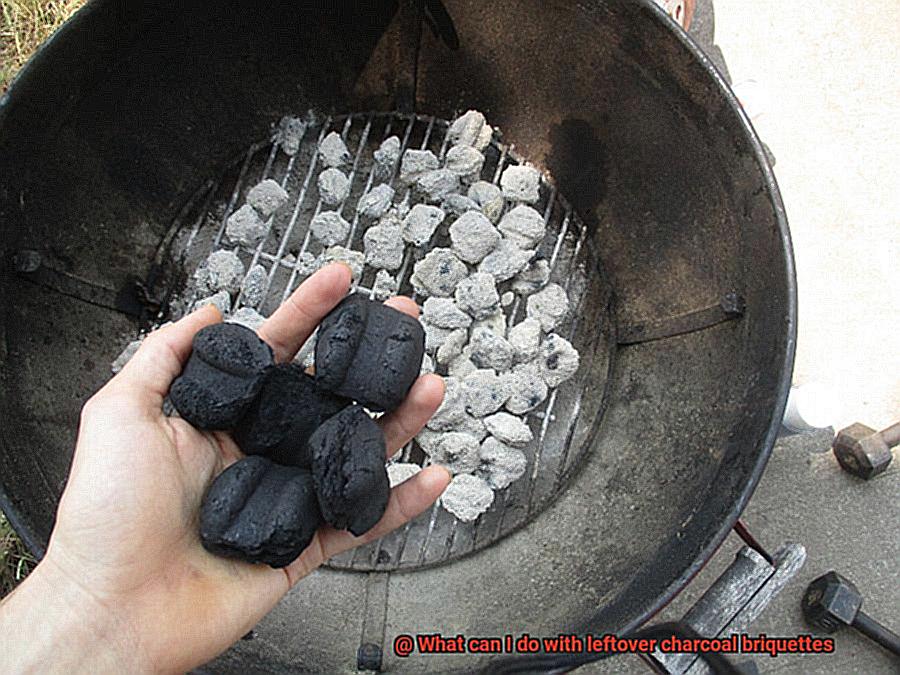
While it’s a great way to reduce waste, it’s also important to follow safety precautions to avoid accidents. Here are five crucial safety tips to keep in mind while reusing charcoal briquettes:
Protect Your Hands
Always wear gloves when handling leftover charcoal briquettes. The heat from the old briquettes can cause severe burns.
Cool it Down
It’s essential to let the charcoal cool down entirely before reusing it. Hot charcoal can cause dangerous flare-ups and accidents.
Skip the Lighter Fluid
Using lighter fluid to reignite leftover charcoal briquettes is a big no-no. It can cause a dangerous flare-up and increase the risk of accidents.
Store Safely
If you plan on reusing the leftover charcoal, store it in a cool, dry place away from flammable objects.
Use a Chimney Starter
A chimney starter is a safer and more efficient way to light up the charcoal without using lighter fluid. It also helps reduce the risk of accidents caused by flare-ups.
It’s essential to prioritize safety when reusing charcoal briquettes. Wait for them to cool down, avoid using lighter fluid, store them safely, and use gloves when handling them. By following these simple tips, you can reuse your leftover charcoal safely and efficiently without any worries.
How to Dispose of Leftover Charcoal Briquettes Properly
Look no further. As an expert in this topic, I am here to share some tips on how to safely and responsibly dispose of your charcoal briquettes.
Let Them Cool Down Completely
The first step is to let the charcoal briquettes cool down completely before disposing of them. This process can take several hours, so it’s important to plan ahead and give yourself plenty of time. Hot charcoal can still cause a fire, and it could damage your garbage can or disposal area. So always wait until they are completely cooled down.
Dispose of Them in a Metal Container
Once they have cooled down, it’s time to dispose of them properly. You can dispose of them in a metal container with a tight-fitting lid. This will prevent any accidental fires from starting and keep the charcoal contained. Never dump them in the trash because they can still be hot and cause a fire. They can also release harmful chemicals into the environment if not disposed of properly.
Don’t Dump Them in the Trash
Charcoal briquettes should never be dumped in the trash, as they can still be hot and cause a fire. They can also release harmful chemicals into the environment if not disposed of properly. So it’s essential to dispose of them in a metal container with a tight-fitting lid.
Consider Composting
If you are an environmentally conscious person and have a compost bin or pile, you can add your cooled charcoal briquettes to it. Charcoal contains carbon, which can help enrich soil and aid in plant growth. Simply crush up the briquettes and mix them with other organic materials like food scraps and yard waste.
Reuse Them
Another option is to reuse your leftover charcoal briquettes for future grilling sessions or smoking meats or vegetables. As long as the charcoal hasn’t been contaminated with any chemicals or other substances, it can be reused. Simply store the leftover briquettes in a dry place like a sealed container or bag.
8Nizh2Umz1c” >
Conclusion
In summary, don’t let your leftover charcoal briquettes go to waste. Instead, repurpose them for various purposes such as starting fires, smoking meats, dehumidifying closets, and enhancing soil quality. Not only does this save you money but it also helps reduce waste and is environmentally friendly.
However, safety should always be a top priority when reusing charcoal briquettes. Be sure to use gloves, let them cool down completely, avoid lighter fluid, store them safely, and use a chimney starter.
If disposing of your leftover charcoal briquettes is the plan, ensure they are fully cooled before putting them in a metal container with a tight-fitting lid. Never throw them in the trash or compost unless they are natural and untreated. Properly repurposing or disposing of your leftover charcoal briquettes can make a significant difference in reducing waste and preserving the environment.

